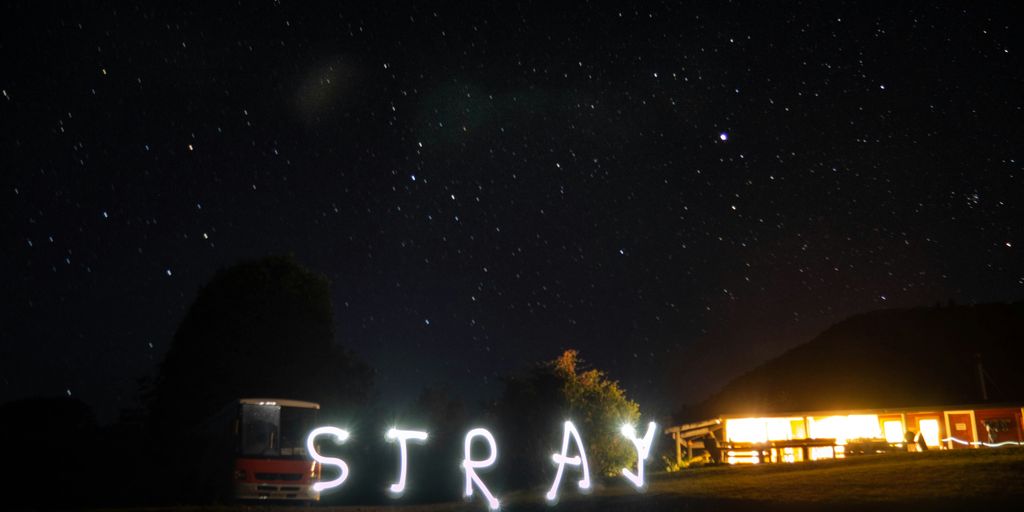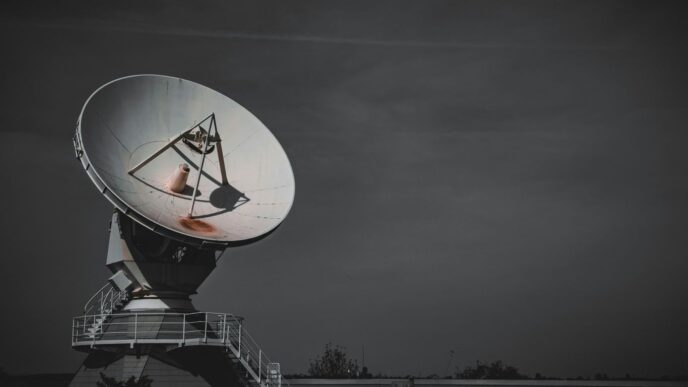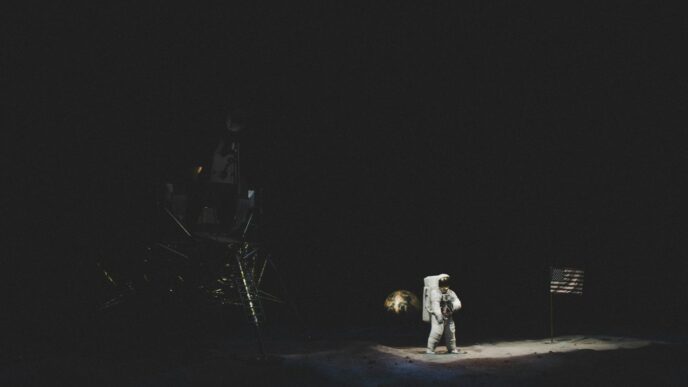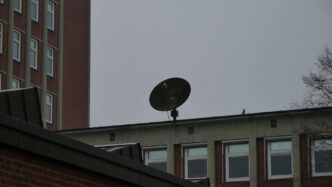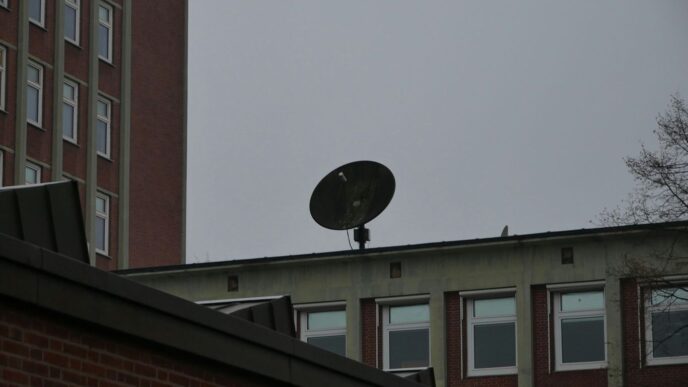Spotting the Starlink satellite train is a pretty cool experience. It’s like seeing a string of lights moving across the night sky. These satellites are part of a big internet project by SpaceX. They look really neat, especially right after a launch. We’ll go over how to see them, when they’re best visible, and what to expect in 2025. It’s a neat way to connect with what’s happening in space.
Key Takeaways
- The “Starlink satellite train” is a series of SpaceX satellites launched together, appearing as a line of lights in the sky.
- These trains are most visible shortly after sunset or before sunrise when the satellites are lit by the sun but the ground is dark.
- Tracking websites and apps are your best bet for finding out when and where to see a Starlink train in your area.
- SpaceX has made efforts to make satellites less bright to help astronomers, so they might not be as dazzling as they once were.
- In 2025, with thousands of satellites already launched and more planned, opportunities to see the Starlink train will continue, though their appearance may vary.
Understanding the Starlink Satellite Train
So, you’ve heard about the Starlink satellite train, right? It’s become this really popular thing to look for in the night sky. Basically, it’s what you see right after SpaceX launches a bunch of its Starlink internet satellites. They all go up together, and for a little while, they travel in a line, kind of like a train crossing the sky. It’s pretty neat to see.
What Constitutes a Starlink Satellite Train?
A Starlink satellite train is really just a group of these satellites, fresh off a launch, still traveling close together. They’re all heading to their operational spots in orbit, but for the first few days, they stick pretty close. This makes them look like a string of lights moving across the sky. They don’t have their own lights, by the way; we only see them because the sun is still shining on them while we’re down here in the dark. It’s a temporary thing, though. As they get to where they need to be, they spread out and become much harder to spot.
The Spectacle of Post-Launch Formations
This whole
When and Where to Witness the Starlink Satellite Train
So, you want to catch a glimpse of that famous Starlink satellite train, huh? It’s not as simple as just looking up randomly, but it’s definitely doable if you know when and where to aim your gaze.
Optimal Viewing Times: Dusk and Dawn
Think of it like this: the satellites are way up there, orbiting Earth, and they don’t have their own lights. They’re only visible because the sun is shining on them. So, the best time to see them is when the ground below is dark, but the satellites are still catching the sun’s rays. That usually means the hour or so right after the sun sets, or the hour or so right before the sun comes up. It’s that sweet spot where the sky is dark enough for you to see them, but they’re still lit up like little celestial pearls.
The Crucial Role of Launch Schedules
Now, the really spectacular
Tracking Your Next Starlink Satellite Train Sighting
Spotting the Starlink satellite train is all about knowing when and where to look. It’s not quite as simple as just glancing up, but with the right tools, you can significantly increase your chances of seeing this modern marvel.
Leveraging Satellite Tracking Websites
There are some really helpful websites out there that do the heavy lifting for you. They take all the complex orbital data and present it in a way that’s easy to understand. You just pop in your location, and they’ll tell you when a Starlink train is predicted to pass overhead. These sites are your best bet for accurate predictions. It’s a good idea to check a couple of different ones to make sure the times line up. This way, you’re not left staring at an empty sky.
Utilizing Dedicated Mobile Applications
Mobile apps are super convenient because, well, your phone is usually with you. Many of these apps are designed specifically for satellite spotting. They often have features that show you the satellite’s path right on your phone’s screen, using augmented reality. It’s like having a personal sky guide in your pocket. Some even work offline, which is handy if you’re heading out to a spot with no signal. You can find apps that let you track all sorts of satellites, not just Starlink.
Cross-Referencing Prediction Tools for Accuracy
To really nail down the best viewing times, it’s smart to use more than one tracking tool. Think of it like double-checking your work. If one website or app says a train will be visible at 9:15 PM from the west, and another one agrees, you can be pretty confident that’s the time to be outside. This cross-referencing helps filter out any minor discrepancies and gives you a more reliable window for your sighting. As of August 1, 2025, there are over 8,000 Starlink satellites in orbit, so there are plenty of opportunities, but timing is still key [d851].
Here’s a quick rundown of what to do:
- Find a reliable tracking source: Use a well-known website or a dedicated mobile app.
- Enter your location: Be precise to get the most accurate pass predictions.
- Note the details: Pay attention to the predicted time, the direction the train will appear from, and its expected brightness.
- Check multiple sources: Compare predictions from different tools for better accuracy.
- Plan your viewing: Head outside a few minutes before the predicted time to get settled.
Factors Influencing Starlink Satellite Visibility
So, you want to see a Starlink train, huh? It’s not just about knowing when to look up; a few things really change how bright and obvious those little guys are. Think of it like trying to see a car’s headlights – it depends on the time of day, if they’re on, and how clean the windshield is.
The Impact of Orbital Ascent on Appearance
When a batch of Starlink satellites first launches, they’re all bunched up together, like a string of pearls. This is when they’re most likely to look like a distinct train. But here’s the thing: they don’t stay like that. Over the next few days and weeks, each satellite fires up its thrusters to move to its final, higher orbit. As they spread out and climb higher, they also start to look dimmer. So, if you miss that initial post-launch window, you might still see them, but they’ll be more spread out and harder to spot with just your eyes.
SpaceX’s Efforts to Mitigate Brightness
SpaceX actually heard the astronomers loud and clear. The early Starlink satellites were surprisingly bright, sometimes even brighter than expected. To fix this, they’ve tried a couple of things. They’ve put special dark coatings on some satellites, kind of like giving them a matte finish instead of a shiny one. They also added sun visors, which are basically little shields to block sunlight from hitting the most reflective parts. These changes have made a difference, making individual satellites less glaring. They even experimented with putting some satellites into lower orbits, around 350 km instead of the usual 550 km. This helps them stay in Earth’s shadow more often, making them dimmer. Early tests showed this could cut down on visible satellite streaks in telescope images by a lot!
How Sunlight Illumination Affects Visibility
This is a big one. Starlink satellites don’t have their own lights like an airplane does. The only reason we see them is because sunlight bounces off them. That’s why the best times to see them are usually right after sunset or just before sunrise. At those times, the ground is dark, but the satellites, way up there, are still catching the sun’s rays. The angle of the sun matters a ton. If the sun is just right, it can light them up like tiny, moving stars. However, those lower orbits that help dim them at night can sometimes make them brighter during twilight hours because they’re closer to us and still catching the sun at a low angle. It’s a bit of a balancing act, really.
Navigating the Starlink Satellite Network in 2025
As we move through 2025, the Starlink network continues its rapid expansion, fundamentally changing the landscape of low Earth orbit. SpaceX is keeping up a really fast pace with launches, meaning new batches of satellites are heading up almost every week. By the middle of this year, there were already over 8,000 Starlink satellites up there, and that number is only going to climb. SpaceX has permission for 12,000 and has even asked for approval for another 30,000, so the constellation could get much, much bigger.
This growth isn’t just about numbers, though. We’re seeing the introduction of Starlink v2.0 satellites. These are bigger and more powerful than the earlier versions, designed to carry more internet data. Some reports say they’re about three times heavier than the v1.0 units. While these newer satellites might be intrinsically brighter, SpaceX is working on ways to make them less noticeable, like adding sun visors. It’s a balancing act, really, between providing global internet access and keeping our night skies clear for everyone to enjoy.
Here’s a quick look at the current scale and future plans:
- Current Scale (Mid-2025): Over 8,000 satellites in orbit.
- Approved Deployment: Up to 12,000 satellites.
- Future Proposals: SpaceX has requested permission for up to 30,000 additional satellites.
- New Generation: Starlink v2.0 satellites are larger and more powerful.
It’s a fascinating time to be watching the skies. You can keep up with the latest launches and track upcoming satellite passes using various online tools. Many people find apps like Satellite Tracker really helpful for knowing exactly when and where to look for these celestial trains. It’s a great way to connect with what’s happening in space, even if it does spark some debate about how many satellites are too many.
Tips for Observing the Starlink Satellite Train

So, you want to catch a glimpse of those Starlink satellites, huh? It’s not as tricky as it might seem, but a little preparation goes a long way. Think of it like getting ready for a meteor shower – you need to know when and where to look.
Preparing Your Eyes for Darkness
This is a big one, honestly. Our eyes are pretty amazing, but they need time to get used to the dark. If you’ve been staring at your phone or a bright light, your eyes won’t pick up those faint moving lights as well. So, head outside about 10-15 minutes before the predicted sighting time. Just chill, let your eyes adjust. Seriously, give your eyes at least five minutes in the dark before you start scanning the sky. It makes a world of difference. Avoid looking at any bright screens during this time; it really resets your night vision.
Orienting Yourself in the Night Sky
Knowing where to look is half the battle. Those satellite trackers you’ll be using (more on that later!) will give you a direction. It might say something like "starts in the west and moves northeast" or give you an altitude, like "peaks at 40 degrees above the horizon." Don’t just guess! Use a compass app on your phone, or even just remember where west is before you go out. If it says 40 degrees, that’s roughly halfway between the horizon and the point directly overhead (which is 90 degrees). It helps to have a landmark, like a tall tree or a building, at that approximate spot on the horizon to help you aim.
Recognizing the Appearance of the Train
When you see them, they won’t look like shooting stars that flash and disappear. Starlink satellites usually appear as a steady line of lights, moving at a consistent pace across the sky. They don’t blink like airplanes do. Depending on how many are in the launch batch and how spread out they are, it might look like a short string of pearls, or sometimes a longer, more spaced-out procession. They’re generally bright enough to see with just your eyes, but if you have binoculars handy, you might catch fainter ones that are trailing behind the main group. The whole show usually lasts just a few minutes, so keep watching!
Keep Looking Up!
So, there you have it. Spotting the Starlink train in 2025 is totally doable, but it takes a little planning. Remember, these lights are just satellites reflecting the sun, not aliens or anything. They’re pretty cool to see right after a launch, especially in the hours after sunset or before sunrise. Just use those tracking apps or websites we talked about, pick a clear night, and head outside. It’s a neat way to connect with what’s happening up there in space, even with all the talk about how they affect telescope views. Hopefully, this guide helps you catch a glimpse of this modern marvel. Happy skywatching!
Frequently Asked Questions
What exactly is a Starlink satellite train?
A “Starlink satellite train” is what you see shortly after SpaceX launches a new group of its Starlink internet satellites. They fly in a line, like a train, across the night sky. It looks like a string of bright lights moving together. This happens because the satellites are still close to each other as they head to their final orbits.
When is the best time to see a Starlink satellite train?
You can best see these trains right after sunset or just before sunrise. At these times, the ground is dark, but the satellites are still lit up by the sun. You need to check a satellite tracking website or app for the exact times and where to look in the sky for your area. Knowing the launch schedule helps too, as the trains are most visible in the first few days after a launch.
How can I find out when and where to see them?
You can use websites like Heavens-Above or FindStarlink.com, or special phone apps. These tools show you when and where the satellites will be visible from your specific location. They often give you details like the direction to look and how bright they’ll be.
What do Starlink satellites look like in the sky?
Starlink satellites don’t have their own lights. We see them because they reflect sunlight. They look like steady lights, not blinking ones like airplanes. They appear as a line of bright dots moving across the sky. They are usually bright enough to see without any special equipment.
Are Starlink satellites still very bright?
SpaceX has made efforts to make the satellites less bright to help astronomers. They’ve added visors to block sunlight and used darker materials. So, while they can still be seen, they aren’t as dazzlingly bright as they were when the project first started.
How many Starlink satellites are there?
As of August 2025, there are over 8,000 Starlink satellites working in orbit. SpaceX plans to launch many more, possibly up to 42,000 in the future. This large number is why they are noticeable in the sky, but also why astronomers are concerned about how they affect stargazing.


